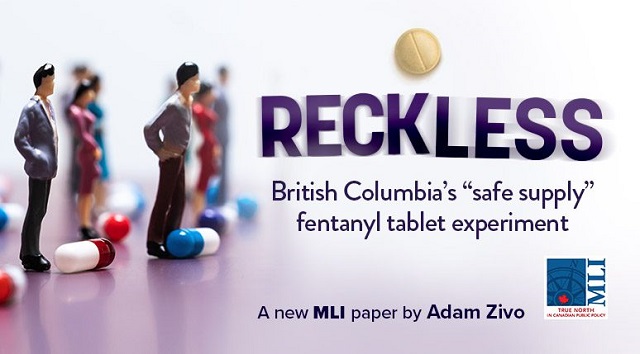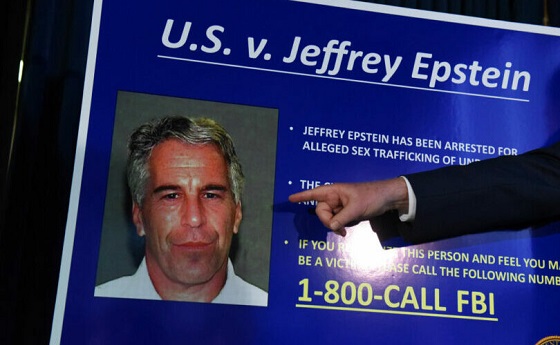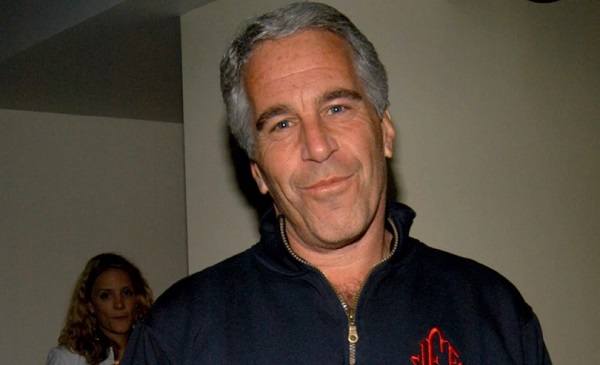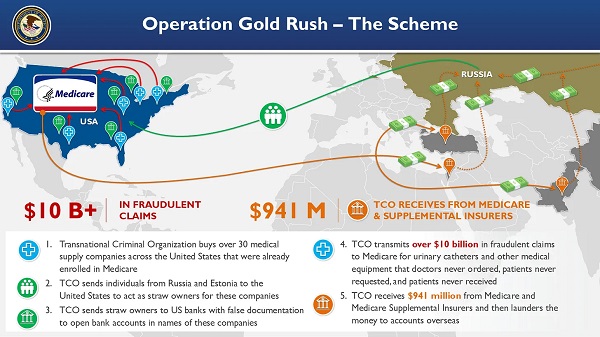Addictions
Reckless: British Columbia’s “safe supply” fentanyl tablet experiment

From the MacDonald Laurier Institute
By Adam Zivo
While safer supply sounds nice in theory, addiction experts have found that drug users are reselling (“diverting”) a significant portion of their free hydromorphone on the black market to purchase harder substances. This has fuelled new addictions while generating handsome profits for organized crime.
Adam Zivo reviews the latest drug protocols adopted by the BC government and reports on their alarming lack of evidence and accountability.
British Columbia’s new drug protocols allow doctors throughout the province to prescribe “safer supply” drugs in a reckless manner.
In a new report titled Reckless: British Columbia’s “safe supply” fentanyl tablet experiment, Adam Zivo reviews the newest drug protocols adopted by the BC government, documenting the evolution of “safe supply” opioid programs in Canada since 2020. Zivo reports on the concerning lack of evidence behind the protocols, how they undermine recovery, drive diversion to the black market, and ruin the lives of young Canadians.
The new protocols not only avoid any requirement for drug users to first try evidence-based recovery programs before receiving high-potency opioids, but also allow minors to receive them, with no reference to the rights and roles of parents or even a minimum age for safer supply clients.
Of deep concern is also the BC government’s approach of continually increasing access to “safe” opioids despite openly admitting that there is no evidence of proven benefits or safety. The protocols also require that clients be told that their access to free fentanyl and sufentanil will almost certainly be cut off if they are hospitalized, or if they attend withdrawal management or substance use treatment facilities.
Zivo explains: “The prospect of free fentanyl and sufentanil creates powerful incentives to sign away one’s rights to evidence based treatment, so the province is essentially exploiting clients’ addictions so that it can experiment on them without taking legal responsibility for potential harms.”
Zivo adds that “one can reasonably expect that a significant portion of the fentanyl tablets being distributed by the BC government will end up being traded or resold on the black market,” explaining how mass diversion is already a major issue for weaker “safer supply” opioids like hydromorphone.
While addiction experts have been overwhelmingly critical of unsupervised safer supply, Zivo notes that many believe that the solution is not to abolish but to reform the program so that drugs can be provided more responsibly. By receiving safer supply as a temporary intervention, addicted users can transition to recovery-oriented treatments such as opioid agonist therapy (OAT.)
“It would not take much to reshape BC’s safer supply fentanyl and sufentanil programs into something more responsible and genuinely safe,” concludes Zivo. “There is nothing preventing the province from redesigning safer supply as a recovery-oriented intervention.”
To learn more, read the full paper here:
Executive Summary
This past August, British Columbia’s government quietly launched new protocols that allow doctors to prescribe “safer supply” fentanyl tablets and liquid sufentanil. Fentanyl is at least 10 times stronger than hydromorphone and sufentanil, which is derived from fentanyl, is a further 5 to 10 times more potent than its parent drug. While in theory these drugs could save lives if provisioned cautiously, the way the province has chosen to distribute these dangerous opioids is nothing short of reckless.
There is evidence to support the use of opioid agonist therapy (“OAT”) medications, such as methadone, buprenorphine, and slow release oral morphine in addiction treatment, but the government’s new protocols extrapolate OAT-related evidence to support “safer supply” fentanyl even though the two therapies have little in common. In fact, the government’s protocols stress that providing safer supply fentanyl or sufentanil is “not a treatment for opioid use disorder” and that “there is no evidence available supporting this intervention, safety data, or established best practices for when and how to provide it.” It is deeply concerning that the BC government has, over the past several years, significantly increased access to “safe” fentanyl and sufentanil despite openly admitting that there is no evidence showing that these interventions provide any benefits and can be implemented safely.
“Safer supply” programs claim to reduce overdoses and deaths by providing free pharmaceutical-grade drugs as alternatives to potentially tainted illicit substances. While safer supply sounds nice in theory, addiction experts have found that drug users are reselling (“diverting”) a significant portion of their free hydromorphone on the black market to purchase harder substances. This has fuelled new addictions while generating handsome profits for organized crime. Some patients have even been coerced into securing safer supply they didn’t need. Pimps and abusive partners pressure vulnerable women into securing as much hydromorphone as possible for black market resale. Other vulnerable patients, such as the geriatric and disabled, have been robbed of their safer supply outside of pharmacies.
There are other issues with the protocols, too. They require that clients be told that their access to free fentanyl and sufentanil will almost certainly be cut off if they are hospitalized, or if they attend withdrawal management or substance use treatment facilities. This creates powerful disincentives for drug users to seek life-saving health care. Further, none of the safer supply protocols by the British Columbia Centre on Substance Use (BCCSU) discuss the rights and roles of the parents of minors struggling with addiction. It appears that health care providers can give fentanyl and sufentanil to minors regardless of whether parents are aware of, or consent to, this intervention. The protocols do not specify a minimum age for safer supply clients.
It would not take much to reshape BC’s safer supply fentanyl and sufentanil programs into something more responsible and genuinely safe. There is nothing preventing the province from redesigning safer supply as a recovery-oriented intervention. Experts argue that safer supply could be helpful if used as a temporary intervention that helps severely-addicted users make the transition to recovery-oriented treatments, such as OAT.
There is also nothing stopping the province from fixing many of the issues with the safer supply program – including lax safeguards for youth. Any safer supply model must require supervised consumption. It is the absence of this supervision that has enabled the mass diversion of safer supply drugs onto the black market.
Governments have a duty to provide evidence-based treatment to vulnerable citizens and consider collateral harms to others. Rather than fulfil this duty, the BC government is committing to risky and highly experimental interventions that lack an appropriate evidence base.
Adam Zivo is a freelance writer and political analyst best known for his weekly columns in the National Post. He holds a Master of Public Policy from the Munk School of Global Affairs and Public Policy and recently founded the Centre for Responsible Drug Policy, a nonprofit advocacy organization.
Addictions
‘Over and over until they die’: Drug crisis pushes first responders to the brink

First responders say it is not overdoses that leave them feeling burned out—it is the endless cycle of calls they cannot meaningfully resolve
The soap bottle just missed his head.
Standing in the doorway of a cluttered Halifax apartment, Derek, a primary care paramedic, watched it smash against the wall.
Derek was there because the woman who threw it had called 911 again — she did so nearly every day. She said she had chest pain. But when she saw the green patch on his uniform, she erupted. Green meant he could not give her what she wanted: fentanyl.
She screamed at him to call “the red tags” — advanced care paramedics authorized to administer opioids. With none available, Derek declared the scene unsafe and left. Later that night, she called again. This time, a red-patched unit was available. She got her dose.
Derek says he was not angry at the woman, but at the system that left her trapped in addiction — and him powerless to help.
First responders across Canada say it is not overdoses that leave them feeling burned out — it is the endless cycle of calls they cannot meaningfully resolve. Understaffed, overburdened and dispatched into crises they are not equipped to fix, many feel morally and emotionally drained.
“We’re sending our first responders to try and manage what should otherwise be dealt with at structural and systemic levels,” said Nicholas Carleton, a University of Regina researcher who studies the mental health of public safety personnel.
Canadian Affairs agreed to use pseudonyms for the two frontline workers referenced in this story. Canadian Affairs also spoke with nine other first responders who agreed to speak only on background. All of these sources cited concerns about workplace retaliation for speaking out.
Moral injury
Canada’s opioid crisis is pushing frontline workers such as paramedics to the brink.
A 2024 study of 350 Quebec paramedics shows one in three have seriously considered suicide. Globally, ambulance workers have among the highest suicide rates of public service personnel.
Between 2017 and 2024, Canadian paramedics responded to nearly 240,000 suspected opioid overdoses. More than 50,000 of those were fatal.
Yet many paramedics say overdose calls are not the hardest part of the job.
“When they do come up, they’re pretty easy calls,” said Derek. Naloxone, a drug that reverses overdoses, is readily available. “I can actually fix the problem,” he said. “[It’s a] bit of instant gratification, honestly.”
What drains him are the calls they cannot fix: mental health crises, child neglect and abuse, homelessness.
“The ER has a [cardiac catheterization] lab that can do surgery in minutes to fix a heart attack. But there’s nowhere I can bring the mental health patients.
“So they call. And they call. And they call.”
Thomas, a primary care paramedic in Eastern Ontario, echoes that frustration.
“The ER isn’t a good place to treat addiction,” he said. “They need intensive, long-term psychological inpatient treatment and a healthy environment and support system — first responders cannot offer that.”
That powerlessness erodes trust. Paramedics say patients with addictions often become aggressive, or stop seeking help altogether.
“We have a terrible relationship with the people in our community struggling with addiction,” Thomas said. “They know they will sit in an ER bed for a few hours while being in withdrawals and then be discharged with a waitlist or no follow-up.”
Carleton, of the University of Regina, says that reviving people repeatedly without improvement decreases morale.
“You’re resuscitating someone time and time again,” said Carleton, who is also director of the Psychological Trauma and Stress Systems Lab, a federal unit dedicated to mental health research for public safety personnel. “That can lead to compassion fatigue … and moral injury.”
Katy Kamkar, a clinical psychologist focused on first responder mental health, says moral injury arises when workers are trapped in ethically impossible situations — saving a life while knowing that person will be back in the same state tomorrow.
“Burnout is … emotional exhaustion, depersonalization, and reduced personal accomplishment,” she said in an emailed statement. “High call volumes, lack of support or follow-up care for patients, and/or bureaucratic constraints … can increase the risk of reduced empathy, absenteeism and increased turnover.”
Kamkar says moral injury affects all branches of public safety, not just paramedics. Firefighters, who are often the first to arrive on the scene, face trauma from overdose deaths. Police report distress enforcing laws that criminalize suffering.
Understaffed and overburdened
Staffing shortages are another major stressor.
“First responders were amazing during the pandemic, but it also caused a lot of fatigue, and a lot of people left our business because of stress and violence,” said Marc-André Périard, vice president of the Paramedic Chiefs of Canada.
Nearly half of emergency medical services workers experience daily “Code Blacks,” where there are no ambulances available. Vacancy rates are climbing across emergency services. The federal government predicts paramedic shortages will persist over the coming decade, alongside moderate shortages of police and firefighters.
Unsafe work conditions are another concern. Responders enter chaotic scenes where bystanders — often fellow drug users — mistake them for police. Paramedics can face hostility from patients they just saved, says Périard.
“People are upset that they’ve been taken out of their high [when Naloxone is administered] and not realizing how close to dying they were,” he said.
Thomas says safety is undermined by vague, inconsistently enforced policies. And efforts to collect meaningful data can be hampered by a work culture that punishes reporting workplace dangers.
“If you report violence, it can come back to haunt you in performance reviews” he said.
Some hesitate to wait for police before entering volatile scenes, fearing delayed response times.
“[What] would help mitigate violence is to have management support their staff directly in … waiting for police before arriving at the scene, support paramedics in leaving an unsafe scene … and for police and the Crown to pursue cases of violence against health-care workers,” Thomas said.
“Right now, the onus is on us … [but once you enter], leaving a scene is considered patient abandonment,” he said.
Upstream solutions
Carleton says paramedics’ ability to refer patients to addiction and mental health referral networks varies widely based on their location. These networks rely on inconsistent local staffing, creating a patchwork system where people easily fall through the cracks.
“[Any] referral system butts up really quickly against the challenges our health-care system is facing,” he said. “Those infrastructures simply don’t exist at the size and scale that we need.”
Périard agrees. “There’s a lot of investment in safe injection sites, but not as much [resources] put into help[ing] these people deal with their addictions,” he said.
Until that changes, the cycle will continue.
On May 8, Alberta renewed a $1.5 million grant to support first responders’ mental health. Carleton welcomes the funding, but says it risks being futile without also addressing understaffing, excessive workloads and unsafe conditions.
“I applaud Alberta’s investment. But there need to be guardrails and protections in place, because some programs should be quickly dismissed as ineffective — but they aren’t always,” he said.
Carleton’s research found that fewer than 10 mental health programs marketed to Canadian governments — out of 300 in total — are backed up by evidence showing their effectiveness.
In his view, the answer is not complicated — but enormous.
“We’ve got to get way further upstream,” he said.
“We’re rapidly approaching more and more crisis-level challenges… with fewer and fewer [first responders], and we’re asking them to do more and more.”
This article was produced through the Breaking Needles Fellowship Program, which provided a grant to Canadian Affairs, a digital media outlet, to fund journalism exploring addiction and crime in Canada. Articles produced through the Fellowship are co-published by Break The Needle and Canadian Affairs.
Addictions
New RCMP program steering opioid addicted towards treatment and recovery

News release from Alberta RCMP
Virtual Opioid Dependency Program serves vulnerable population in Red Deer
Since April 2024, your Alberta RCMP’s Community Safety and Well-being Branch (CSWB) has been piloting the Virtual Opioid Dependency Program (VODP) program in Red Deer to assist those facing opioid dependency with initial-stage intervention services. VODP is a collaboration with the Government of Alberta, Recovery Alberta, and the Alberta RCMP, and was created to help address opioid addiction across the province.
Red Deer’s VODP consists of two teams, each consisting of a police officer and a paramedic. These teams cover the communities of Red Deer, Innisfail, Blackfalds and Sylvan Lake. The goal of the program is to have frontline points of contact that can assist opioid users by getting them access to treatment, counselling, and life-saving medication.
The Alberta RCMP’s role in VODP:
- Conducting outreach in the community, on foot, by vehicle, and even UTV, and interacting with vulnerable persons and talking with them about treatment options and making VODP referrals.
- Attending calls for service in which opioid use may be a factor, such as drug poisonings, open drug use in public, social diversion calls, etc.
- Administering medication such as Suboxone and Sublocade to opioid users who are arrested and lodged in RCMP cells and voluntarily wish to participate in VODP; these medications help with withdrawal symptoms and are the primary method for treating opioid addiction. Individuals may be provided ongoing treatment while in police custody or incarceration.
- Collaborating with agencies in the treatment and addiction space to work together on client care. Red Deer’s VODP chairs a quarterly Vulnerable Populations Working Group meeting consisting of a number of local stakeholders who come together to address both client and community needs.
While accountability for criminal actions is necessary, the Alberta RCMP recognizes that opioid addiction is part of larger social and health issues that require long-term supports. Often people facing addictions are among offenders who land in a cycle of criminality. As first responders, our officers are frequently in contact with these individuals. We are ideally placed to help connect those individuals with the VODP. The Alberta RCMP helps those individuals who wish to participate in the VODP by ensuring that they have access to necessary resources and receive the medical care they need, even while they are in police custody.
Since its start, the Red Deer program has made nearly 2,500 referrals and touchpoints with individuals, discussing VODP participation and treatment options. Some successes of the program include:
- In October 2024, Red Deer VODP assessed a 35-year-old male who was arrested and in police custody. The individual was put in contact with medical care and was prescribed and administered Suboxone. The team members did not have any contact with the male again until April 2025 when the individual visited the detachment to thank the team for treating him with care and dignity while in cells, and for getting him access to treatment. The individual stated he had been sober since, saying the treatment saved his life.
- In May 2025, the VODP team worked with a 14-year-old female who was arrested on warrants and lodged in RCMP cells. She had run away from home and was located downtown using opioids. The team spoke to the girl about treatment, was referred to VODP, and was administered Sublocade to treat her addiction. During follow-up, the team received positive feedback from both the family and the attending care providers.
The VODP provides same-day medication starts, opioid treatment transition services, and ongoing opioid dependency care to people anywhere in Alberta who are living with opioid addiction. Visit vodp.ca to learn more.
“This collaboration between Alberta’s Government, Recovery Alberta and the RCMP is a powerful example of how partnerships between health and public safety can change lives. The Virtual Opioid Dependency Program can be the first step in a person’s journey to recovery,” says Alberta’s Minister of Mental Health and Addiction Rick Wilson. “By connecting people to treatment when and where they need it most, we are helping build more paths to recovery and to a healthier Alberta.”
“Part of the Alberta RCMP’s CSWB mandate is the enhancement of public safety through community partnerships,” says Supt. Holly Glassford, Detachment Commander of Red Deer RCMP. “Through VODP, we are committed to building upon community partnerships with social and health agencies, so that we can increase accessibility to supports in our city and reduce crime in Red Deer. Together we are creating a stronger, safer Alberta.”
-

 Crime2 days ago
Crime2 days ago“This is a total fucking disaster”
-

 Fraser Institute1 day ago
Fraser Institute1 day agoBefore Trudeau average annual immigration was 617,800. Under Trudeau number skyrocketted to 1.4 million annually
-

 International2 days ago
International2 days agoChicago suburb purchases childhood home of Pope Leo XIV
-

 Daily Caller2 days ago
Daily Caller2 days ago‘I Know How These People Operate’: Fmr CIA Officer Calls BS On FBI’s New Epstein Intel
-

 MAiD2 days ago
MAiD2 days agoCanada’s euthanasia regime is already killing the disabled. It’s about to get worse
-

 Daily Caller2 days ago
Daily Caller2 days agoBlackouts Coming If America Continues With Biden-Era Green Frenzy, Trump Admin Warns
-

 Red Deer2 days ago
Red Deer2 days agoJoin SPARC in spreading kindness by July 14th
-

 Business1 day ago
Business1 day agoPrime minister can make good on campaign promise by reforming Canada Health Act







